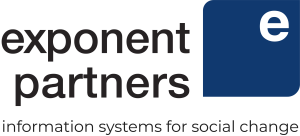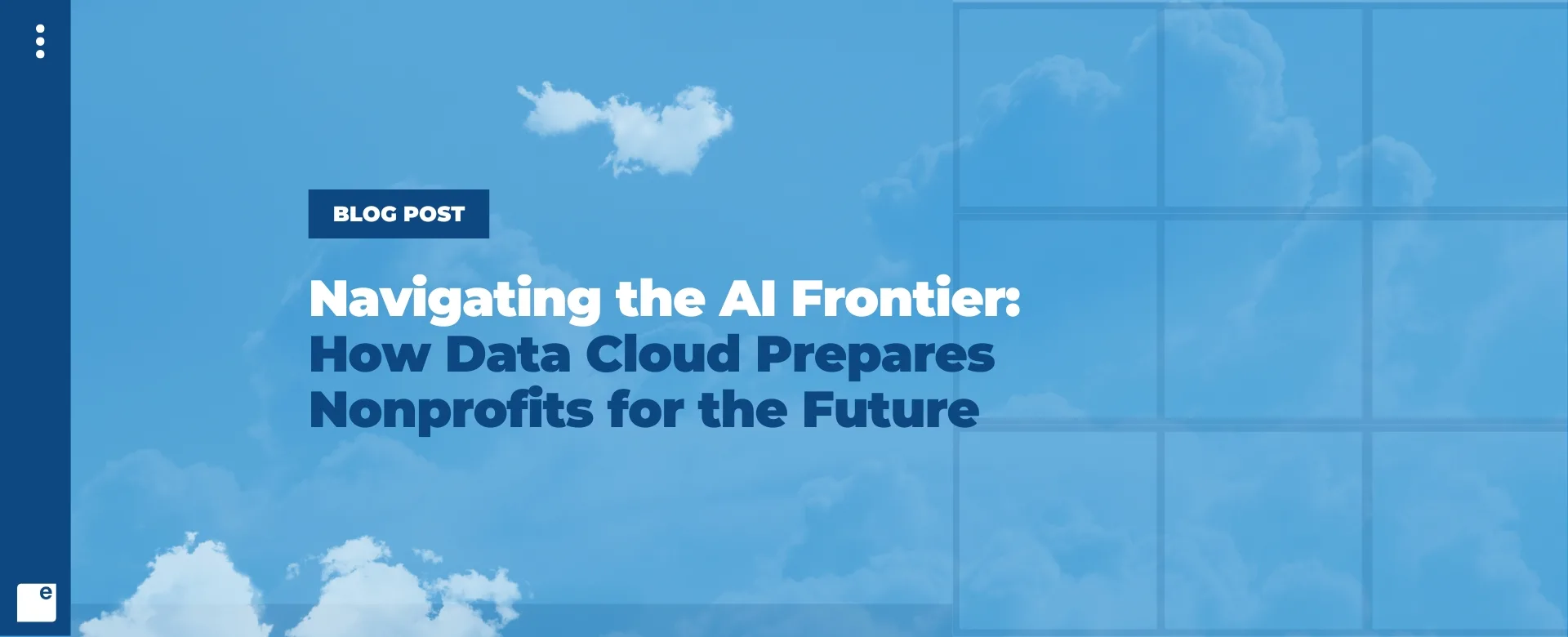Navigating the AI Frontier: How Data Prepares Nonprofits for the Future
In a rapidly changing world where the AI revolution is transforming industries, nonprofits have the opportunity to harness its potential for greater impact. The key to unlocking this potential lies in constructing a strong data strategy that not only tackles current challenges but also establishes a foundation for seamless integration with AI technologies. In this blog post, we’ll delve into the pivotal role of data in the nonprofit sector and how a well-crafted strategy can pave the way for a future seamlessly intertwined with AI.
The Power of Data: A Catalyst for Digital Maturity
In the realm of nonprofits, a solid data strategy serves as the compass for navigating an AI-powered future. Insights from the 5th edition of the Salesforce Nonprofit Trends report reveal a profound truth – organizations with digital maturity significantly outperform their counterparts. They are 3.5 times more likely to surpass mission goals, achieving monumental success. Additionally, they excel in other areas, being 3.4 times more likely to exceed volunteering goals, 2.0 times more likely to surpass program goals, and 1.8 times more likely to exceed fundraising goals. These figures underscore the colossal impact a well-orchestrated data strategy can have.
These insights emphasize the monumental achievements attainable by organizations with digital maturity. They also underscore the imperative need to bridge the gap from the current state to a future seamlessly intertwined with AI, where a robust data strategy becomes the key, unleashing a cascade of benefits in the evolving landscape of Data, AI, CRM, and Trust. Yet, amidst the buzz about Data, AI, CRM, and Trust, it’s crucial to acknowledge that many nonprofits are yet to embrace AI fully. However, some recognize the efficiency and the power to connect with supporters in this evolving landscape.
So, how do organizations begin to address this gap? A robust data strategy acts as the bridge to close that gap. Data is not just information; it’s the heartbeat that brings your mission to life. In the digital age, a well-thought-out data strategy doesn’t just bridge the gap; it unleashes a cascade of benefits.
Three Pillars of a Good Data Strategy: What, How, Who
The key is a strong data strategy with three simple pillars: What, How, Who.
What
What You Have: Take a look at the data your organization has. Understand what information is already there.
What You Need: Identify where you’re lacking or what you need to achieve your goals.
How
How You Classify: Sort your data in a way that makes sense. Categorize information based on its importance and how you use it.
How You Use: Figure out how different teams will use the data to reach their goals.
Who
Who Governs: Have someone responsible for making sure your data is accurate and used responsibly. Hot tip: we’re all responsible for this one.
In simple terms, a good data strategy involves figuring out who is responsible for your data, understanding what data you have (or don’t have), and determining how you classify and use that data. This approach ensures clarity, accountability, and effective utilization of your organization’s data resources.
Salesforce Data Cloud: Bridging the Divide
Now, let’s talk about the real world. Your data isn’t confined to one place. You might use Nonprofit Cloud for fundraising and program management, while another system handles accounting. Maybe your volunteer coordinator swears by spreadsheets. At the end of the day, you have a data strategy challenge on your hands.
But what if we shift our perspective? What if, instead of pursuing a single source of truth, we focus on a simpler concept – a single view of truth? One in which you can stop pursuing that mythical state of consolidating all of your data into one system. Picture your data connected and harmonized, where multiple sources are matched and merged seamlessly. This isn’t just a dream; it’s the reality that Salesforce Data Cloud brings to the table.
In a landscape flooded with diverse data sources, Salesforce Data Cloud becomes your guiding light. This powerful tool harmonizes both internal and external data, creating a unified view of individuals. It’s not just about enhancing decision-making; it’s about laying the groundwork for seamless AI integration. The result? A strong data foundation that simplifies complexity and propels your organization toward a future where data isn’t a challenge but a powerful asset.
Making Data Actionable: A Prerequisite for AI
The true power of data emerges when it becomes actionable. Data Cloud empowers nonprofits to connect disparate systems, from fundraising to programs and grants and those outside of Salesforce such as Amazon servers, websites, and the connection to other endpoints. This connectivity allows for a comprehensive understanding of data streams, facilitating quicker and more informed decision-making.
The announcement of free access to Data Cloud at Dreamforce opens doors for nonprofits to leverage this powerful tool. Beyond fundraising, nonprofits can connect diverse systems and endpoints, streamlining data for more effective campaigns and initiatives.
The Unified Profile: AI’s Trusted Partner
Let’s delve into some practical applications of Salesforce Data Cloud, starting with fundraising. As the holiday season just passed, its a certainty that many organizations executed holiday appeal campaigns. A crucial step in this process is segmentation – creating lists to reach the right person with the right message at the right time. Traditionally, this involves collaboration with a developer, outsourcing to an agency, or navigating the complexities of Excel. It’s neither easy nor fast. Enter Data Cloud – the solution that connects all your data streams in one accessible place.
The beauty of Data Cloud lies in its user-friendly design, tailored for business users, especially marketing and fundraising teams. It offers a plethora of attributes, allowing you to filter by donation amount, geographic location, and more – all without the need for complex calculations or waiting for data sets to undergo review and changes. Data Cloud turns segmentation into a seamless process, making it a dream for organizations.
But that’s not all. Imagine having a unified profile of a donor that captures every touchpoint, engagement, consumer data, and historical data across multiple systems. Data Cloud makes this a reality, and it doesn’t matter where the data lives; you can view it through a unified profile. Witness how active a person has been on every channel – donations, website, email, Google ads, and more. Moreover, Data Cloud empowers major gift officers with insights they wouldn’t have otherwise, allowing them to identify prospective major donors and receive AI recommendations for strategic outreach. To view the demo in action, check out this New York World Tour session.
Conclusion: Data + AI + CRM + Trust
In conclusion, the path to an AI-infused future for nonprofits involves a strategic approach to data. A well-crafted data strategy, combined with technologies like Data Cloud, creates a unified view that serves as the foundation for AI integration. The result is a holistic ecosystem where data, AI, CRM, and trust converge to drive nonprofits toward radically better impact.
For nonprofits navigating the evolving landscape, embracing a data-centric approach is not just a choice but a strategic imperative, ensuring they are well-prepared for the transformative potential of AI in their mission-driven endeavors. Ready to propel your nonprofit into an AI-powered future? Ensure a solid data foundation with the guidance of Exponent Partners, the experts in navigating the evolving landscape. Connect with us today for a free consultation.

